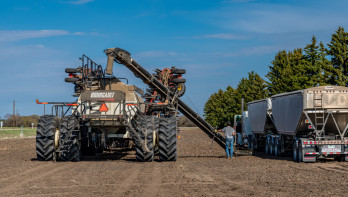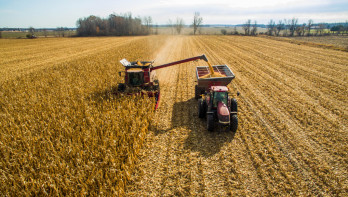Analysis Grains
Weather reports support the grain market
The grain complex closed across the board in the green. The uncooperative weather plays a role in this. Rain continues to hinder fieldwork here, while drought causes headaches for growers to the east and on the other side of the Atlantic Ocean. The race for the US presidency adds some extra tension.
The December contract for wheat on the Matif closed €2.50 higher at €230.25 per bushel yesterday. Wheat also showed a slight increase on the CBoT, closing 0.8% higher at $5.89½ per bushel. Corn closed 0.5% higher at $4.06¾ per bushel. Soybeans followed the trend in the grain market, increasing by 0.9% to $9.88¾ per bushel.
Farmers in Northwest Europe are not granted a longer period of dry weather. According to weather reports, there will be no change in this situation for the coming week. Fortunately, it is not as bad as last year, but various sources report that fieldwork is experiencing delays. The harvest of crops such as corn and potatoes is progressing slowly, and farmers are also behind schedule with sowing winter grains around this time.
State of Emergency in Kursk
In the east of Ukraine and the west of Russia, it is too dry. The Russian region of Kursk declared a state of emergency yesterday. Drought is causing the winter grains to fail, according to the local government. By declaring a state of emergency, affected growers can claim extra support from Moscow. Earlier, provinces in the south of Siberia declared a state of emergency due to the weather, where rain during the harvest was the issue.
Kursk is located near the border with Ukraine and is also the scene of the Ukrainian counteroffensive that began last August. Some rain has fallen in the south of Russia, but it is insufficient to allow the wheat, which is significantly behind due to the drought, to recover in time.
Drought is not exclusively a Russian problem. Farmers on the American prairies would also like to see some rain. Just over half, namely 52%, of the winter wheat in the US is facing drought, as indicated by the new drought monitor. Last week it was 47%, and at this time last year it was 48%.

Soybeans are an interesting market and cannot be viewed separately from the weather reports and geopolitical tensions. The planting of soybeans in Brazil is delayed due to the prolonged dry period. Some rain has fallen, and more is expected. This naturally benefits the potential yield of soybeans. For China, which heavily relies on soybeans from Brazil, this signals that there is no urgent need to look for other suppliers.
Political Game
This is where the dynamics on the world stage come into play. China used to play the US and Brazil against each other. When there was ample supply from Brazil, they would ignore soybeans from the US, and vice versa. Now that Trump's chances in the presidential race are rising again, this is a risky strategy for China. Both Harris and Trump are leaning towards an isolationist course, with Trump particularly taking a hawkish stance towards China. According to preliminary figures, US farmers are achieving a relatively good soybean harvest. This presents China with an opportunity to wait quietly in the short term and strike when American exporters start to get nervous about the abundant supply. However, this is a gamble with a new US president who will want to assert their authority in just over two months.




